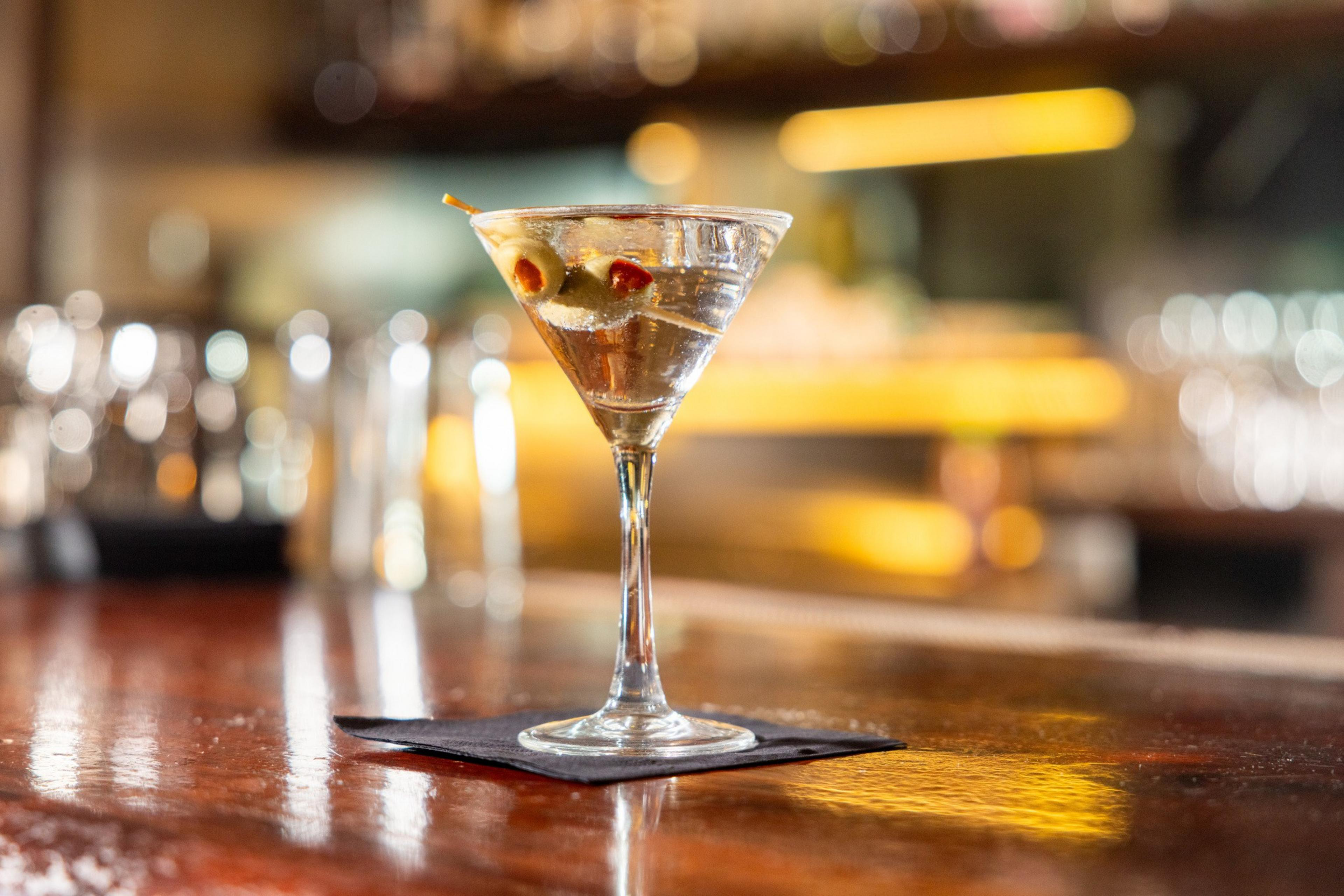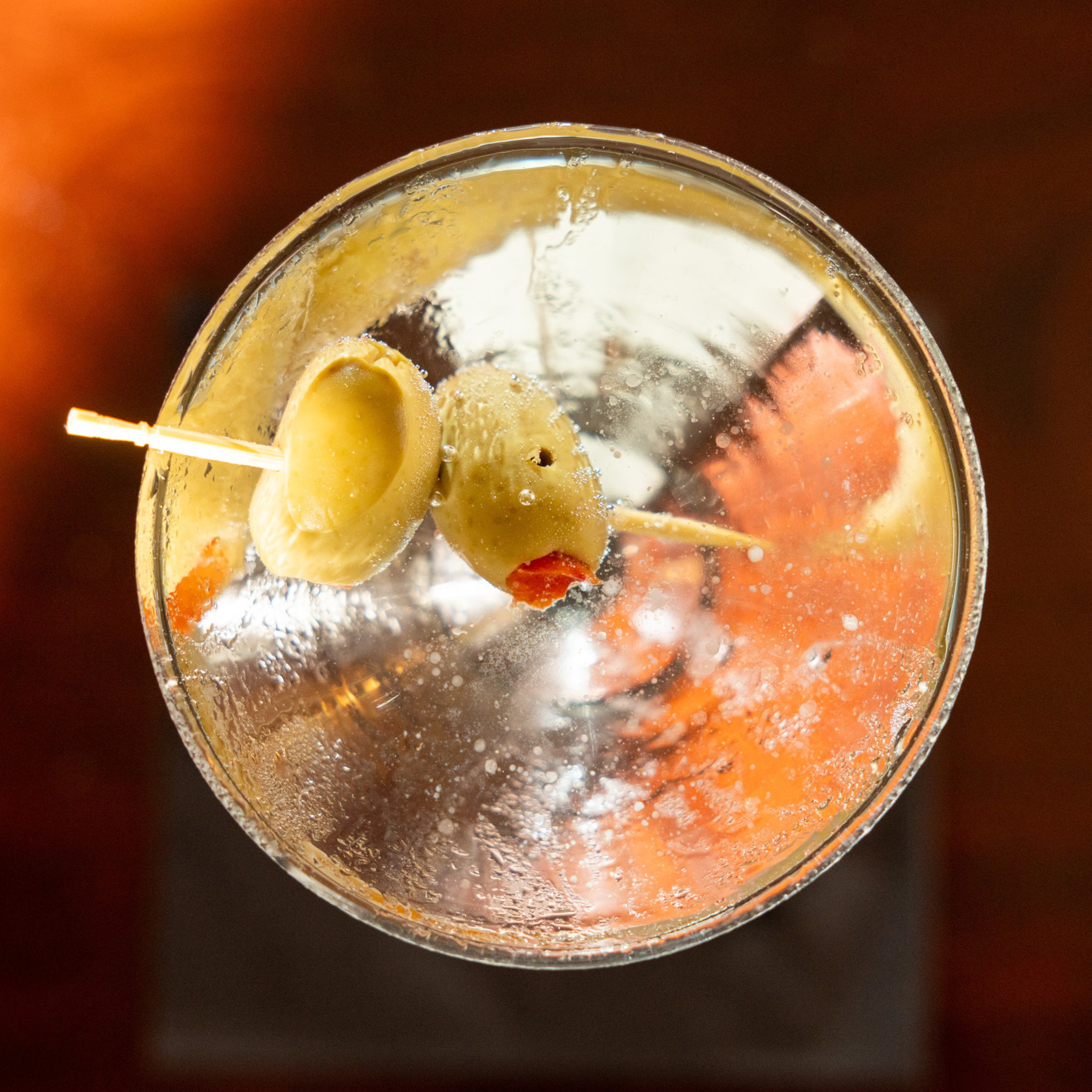Last month, while dining at the new Tiya in the Marina, I plucked a cherry tomato garnish from an egg cup-shaped glass known as a Nick and Nora. Five tiny drops of extra virgin olive oil floated on top of my sourdough-infused vodka-based drink, mesmerizing me as I pondered: What makes a martini a martini anymore?
In our era of alterna-martinis, this is a somewhat controversial (opens in new tab) question. There are ingredients to consider: Hard-liners believe a martini must be unequal parts gin and vermouth, olive brine accepted. A more open-minded camp argues that vodka makes an acceptable base spirit. Then there’s the question of garnish—either a lemon twist, pimento-stuffed olive, or perhaps an onion. By still another definition, a martini can feature either gin or vodka, but must be served up (meaning shaken or stirred with ice) and in a martini glass.
But when was the last time you saw the classic v-shaped silhouette that used to signify you were having a martini?

The vessel might be the most symbolic departure of all. While a handful of San Francisco bars and restaurants still pour ice-cold martinis into the conical glass, it’s far more common today to see them sliding across the bar in either a bell-shaped Nick and Nora (opens in new tab) or a wide-rimmed coupe. The latter shape seems to signify you’re about to embark on a martini made with non-traditional ingredients (perhaps truffle-infused vodka or splash of sherry).
So when did San Francisco martini-markers abandon the angular, Art Deco-inspired glass that was once so intimately associated with the drink?
Jayson Wilde, beverage director for prolific San Francisco hospitality company Future Bars (opens in new tab), says the shift happened during the early aughts, as a by-product of the American craft cocktail renaissance (opens in new tab). In 2006, when Future Bars opened Bourbon & Branch (opens in new tab) in the Tenderloin, one of the city’s pioneering craft cocktail bars (opens in new tab), they served martinis in v-shaped glasses. But it wasn’t by choice. “There wasn’t a good option for a sexy martini glass,” Wilde said, noting that Libbey (opens in new tab) was basically the only company producing barware at scale. “They were hard to find.” America was still coming out of the ’90s, when anything served in a conical glass got categorized as a martini, whether that meant a cosmopolitan or a lemon drop.
But as craft cocktail culture proliferated across the country, more cocktail glass suppliers began to spring up. That’s when Wilde says some bars started to switch over to coupes. There was a practical reason for the change too: “[Coupes are] simply easier to carry on a tray,” Wilde said. “They’re easier to pass off to a guest so you’re not spilling half your drink walking away from the bar.”
The popularity of even more elegant Nick and Nora glasses came even later, and Wilde says they’re even easier for bartenders to use. Unlike wide-rimmed martini glasses or coupes, slender Nick and Nora glasses take up far less space for both storage and in a dishwasher. And while they can be almost as apt to spill as a martini glass, Wilde said the aesthetic appeal has made them a popular substitute. Additionally, Nick and Nora glasses usually hold about five ounces of liquid in total, making them well-suited in size for such a stiff drink.

But that’s about to change, if Wilde’s predictions are correct. As previously maligned ’90s-era cocktails make a big comeback (opens in new tab)—see espresso martinis on every menu—he thinks bartenders will find their way back to using those prototypical, v-shaped martini glasses.
“Everything kind of goes around in phases,” Wilde says, “so you’re probably gonna see the v shapes coming back around again.”
This week, I bellied up to the bar at San Francisco supper club Bix in search of an archetypical martini, v-shaped glass and all. I placed my order—Hendrick’s extra dirty—and just a few minutes later, the bowtie-wearing bartender pushed my drink across the wooden bar.
I stared at the frosty, bell-shaped glass for a moment before asking when the bar stopped serving martinis in a “real” martini glass.
“Oh, that’s only for vodka martinis,” he replied with a shrug. “Gin martinis come in those glasses. But we’ll make it whatever way you want.”